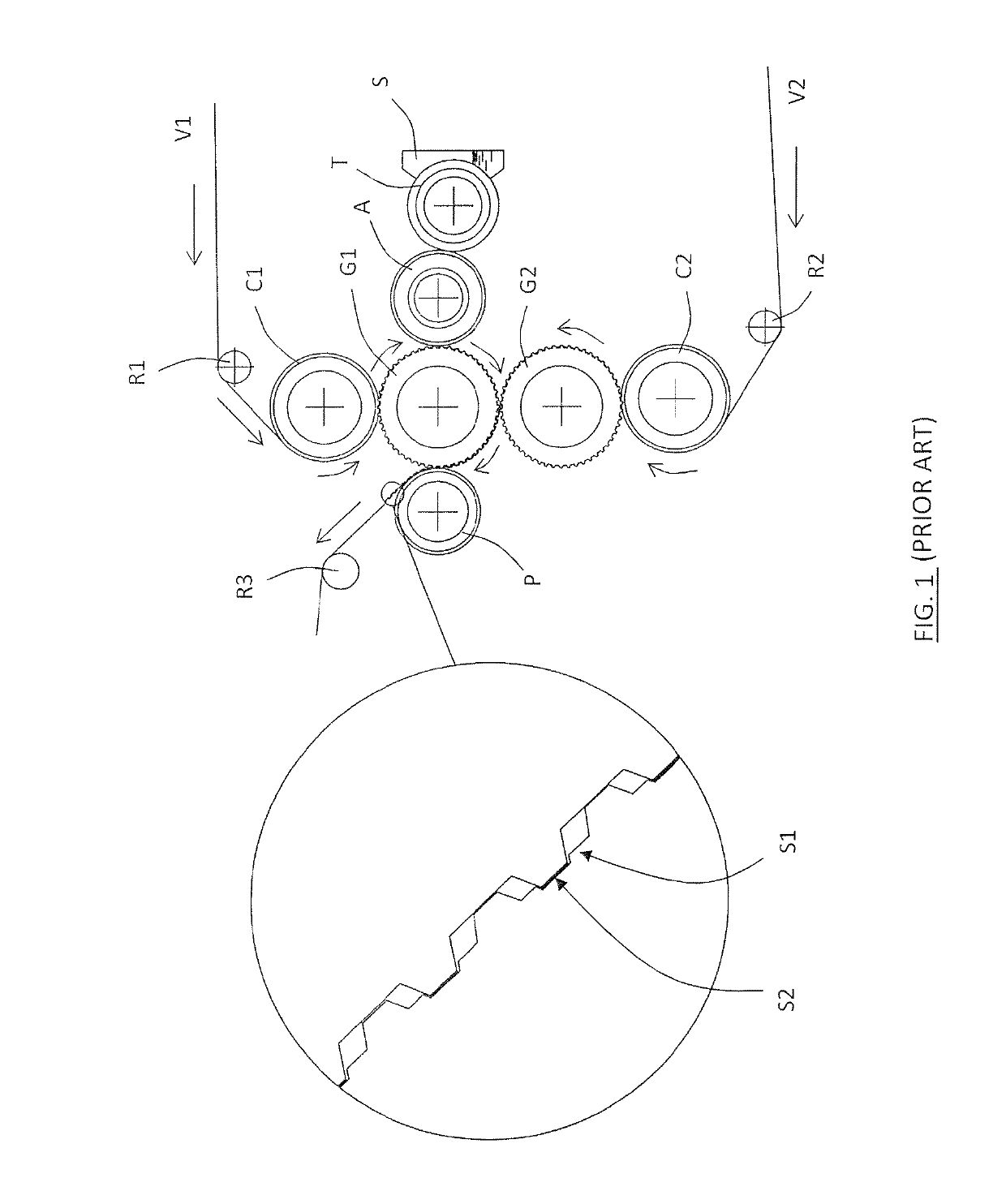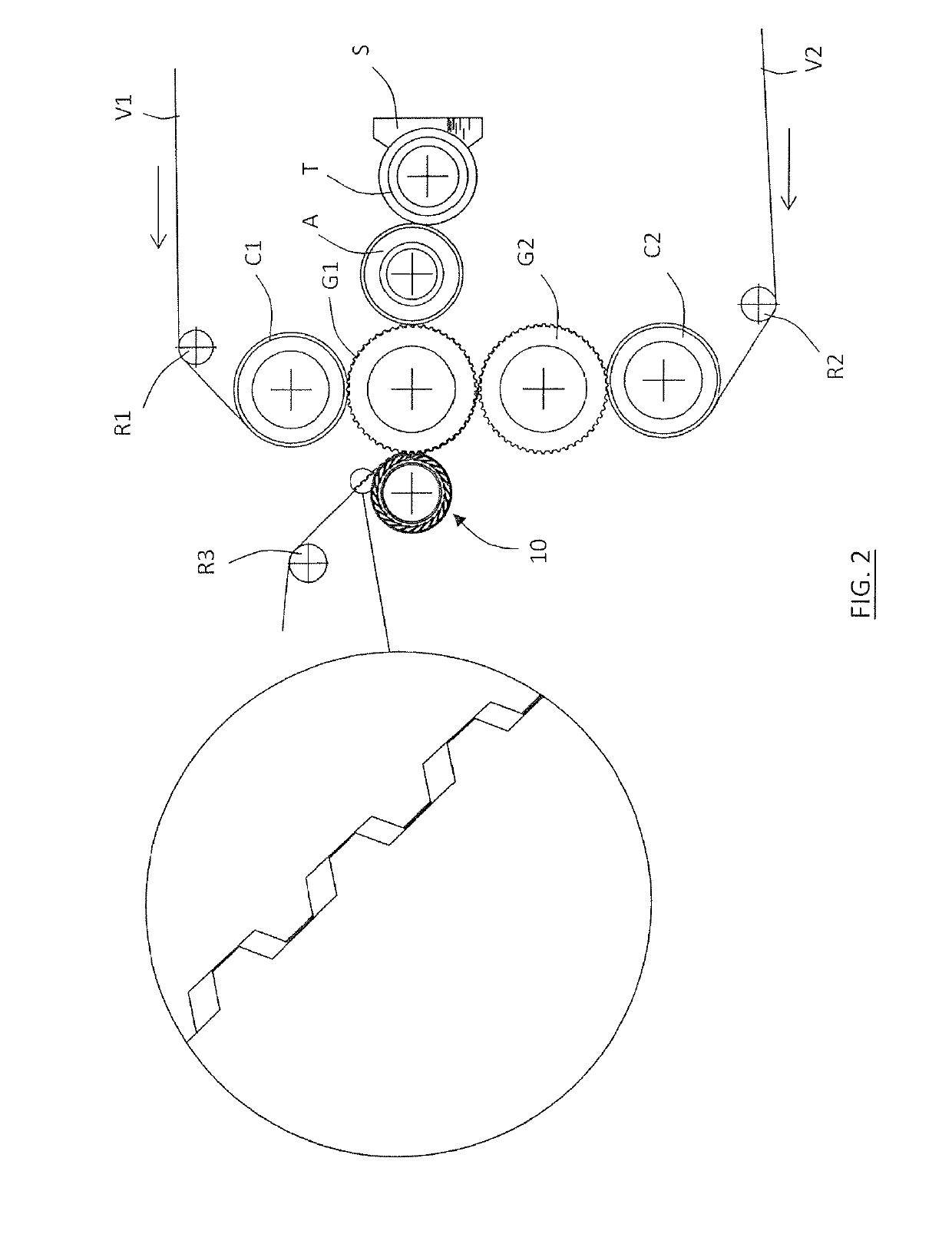Pressing Roller for the Processing of Web Paper Material
- Summary
- Abstract
- Description
- Claims
- Application Information
AI Technical Summary
Benefits of technology
Problems solved by technology
Method used
Image
Examples
Embodiment Construction
[0027]With reference to Figures from 3 to 5 it is shown a pressing roller, 10, according to the present invention, which comprises a cylindrical pressure surface, 11.
[0028]The pressing roller 10 comprises a cylindrical tubular element, 12, extending axially for the entire axial length of the pressing roller 10, mounted coaxially, in rotatably fixed mode, outside two revolving end support bodies, 13 (of which is shown in FIG. 3 only the one on the left end of the pressing roller 10). In the embodiment of FIG. 3 each revolving end support bodies 13 is composed of a tubular portion, 13a, to the outer surface of which is associated the cylindrical tubular element 12 and a solid shaft portion, 13b, one end of which protrudes axially from the cylindrical tubular element 12 and is arranged to be rotatably supported by support members, N, through the interposition of rolling bearings, B.
[0029]The cylindrical pressure surface 11 is defined by the outer surface of a plurality of annular resil...
PUM
 Login to View More
Login to View More Abstract
Description
Claims
Application Information
 Login to View More
Login to View More - R&D
- Intellectual Property
- Life Sciences
- Materials
- Tech Scout
- Unparalleled Data Quality
- Higher Quality Content
- 60% Fewer Hallucinations
Browse by: Latest US Patents, China's latest patents, Technical Efficacy Thesaurus, Application Domain, Technology Topic, Popular Technical Reports.
© 2025 PatSnap. All rights reserved.Legal|Privacy policy|Modern Slavery Act Transparency Statement|Sitemap|About US| Contact US: help@patsnap.com



